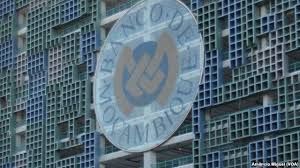Behind the partnership: How co-financing is driving a resilient recovery in Mozambique
Mozambique: Treasury bills increase debt, central bank warns – Notícias

File photo: VOA Portugues
The Mozambican state’s internal indebtedness in 2021, an indicator of systemic risk, increased by 30.5 billion meticais, reflecting the use of Treasury bills to finance the current expenditure deficit, in a context of weak demand for Treasury bonds in the capital market.
The Bank of Mozambique, in its most recent report on financial stability, states that, in a year in which external debt was considerably reduced, this feature of domestic debt influenced the dynamics of the total stock.
It adds that the 2021 budget execution showed that the pressure on the public expenditure side resulted from spending in the health and social action sector, justified by the effort to contain the impact of the Covid-19 pandemic and mitigate its effects on family income, as well as military expenditure.
It notes, however, that the international market’s confidence in the country showed signs of improving with the start of the ‘hidden debts’ trial and negotiations with the International Monetary Fund (IMF) for the resumption of financing, in addition to military advances in Cabo Delgado.
But the country’s risk level remained substantial, even though Moody’s ratings agency had raised its Mozambique rating from Caa2 stable to Caa2 positive.
A substantial risk rating in the international market restricts access to international financial markets, which can in turn increase risk in the domestic financial system’s exchange and interest rate components.
According to the central bank, compared to other Southern African Development Community countries, Mozambique has one of the highest ratings, which can be a disadvantage in attracting investment to the country.













Leave a Reply
Be the First to Comment!
You must be logged in to post a comment.
You must be logged in to post a comment.